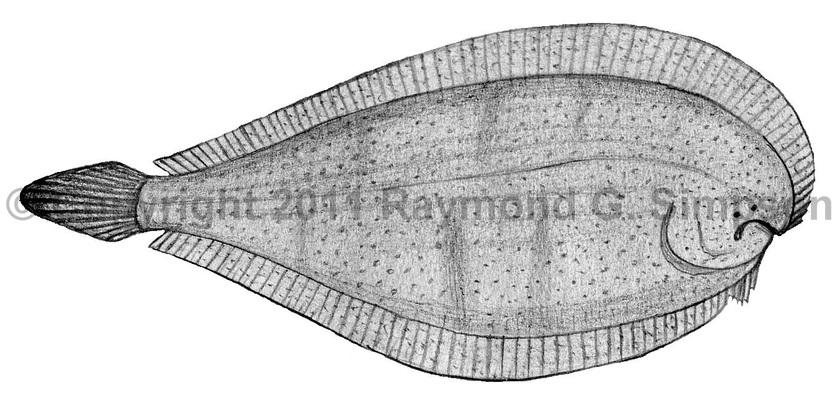
Common Name
Longtail Sole
Year Described
Kaup, 1858
Identification
Dorsal Fin:57-75
Anal Fin: 40-55
Pectoral Fin: none
Pelvic Fin: Ocular side 5, blind side 1-4
Caudal Fin: 15-17
Longitudinal Scales: 54-85
Vetebrae: 8 precaudal, 26-30 caudal; 34-38 total
Very elongate and tapering posteriorly. Supracranial area and anteriormost dorsal fin strongly overhangs front of mouth. Branchiostegal membrane connected to pelvic-thoracic region, partially covering gill opening which is reduced to a small slit. A depression behind anterior nostril. Nostrils larger than eye diameter (1.5-2.0 times). Area anterior to lower eye elevated. Eyes tiny and widely separated (interorbital greater than eye diameter). Upper eye not surrounded by scales and interorbital naked. Head scaly, but areas of cheek and pelvic region with naked skin. Pelvic fin not enclosed in skin; inserted far anteriorly, the first ray orginating under rear jaw and the anterior orbit. Blind side pelvic fin reduced, ocular side one offset from midline. Dorsal and anal fins connected to the caudal fin with a membrane. Caudal fin long and pointed.
Color
Light brown with widely scattered irregular dark blotches (longer vertically) and smaller spots. Fins mostly unmarked except basally. Some specimens unmarked with 7-9 vertical lines. Blind side pale.
Size
Mature adults from 2.5cm SL. Maximum size to 12.4cm.
Habitat
Estuarine areas and river mouths over soft bottoms.
Range
NE South America: Mouths of the rivers Orinoco, Corantjin, Oiapoque, Amazon, and Grajau.
References
Ramos, R.T.C. 2003. Systematic review of Apionichthys (Pleuronectiformes: Achiridae), with description of four new species. Ichthyol. Explor. Freshwat. 14(2):97-126.
Other Notes
Seven other species of Apionichthys occur in the freshwaters of S. America, but only one appears to be found in salt or brackish water.